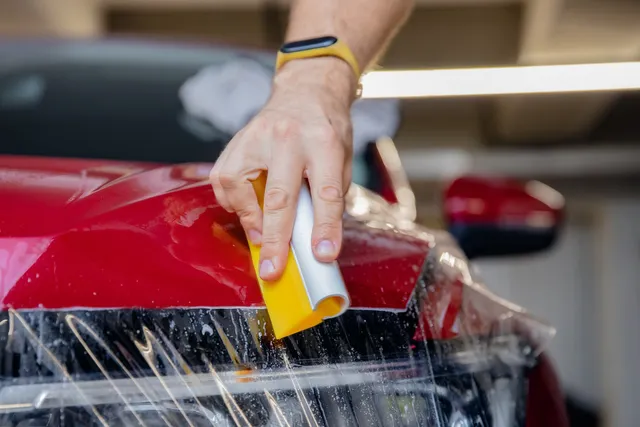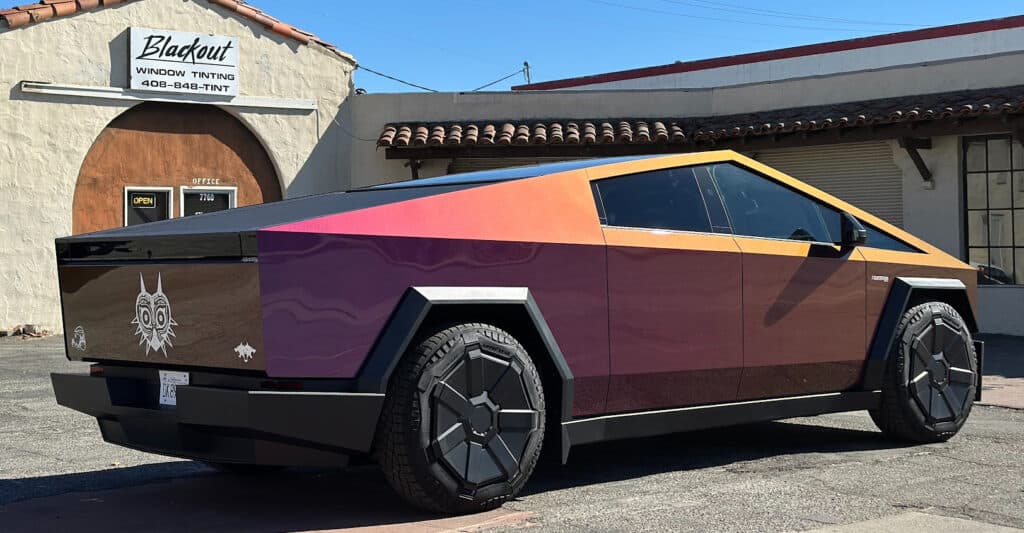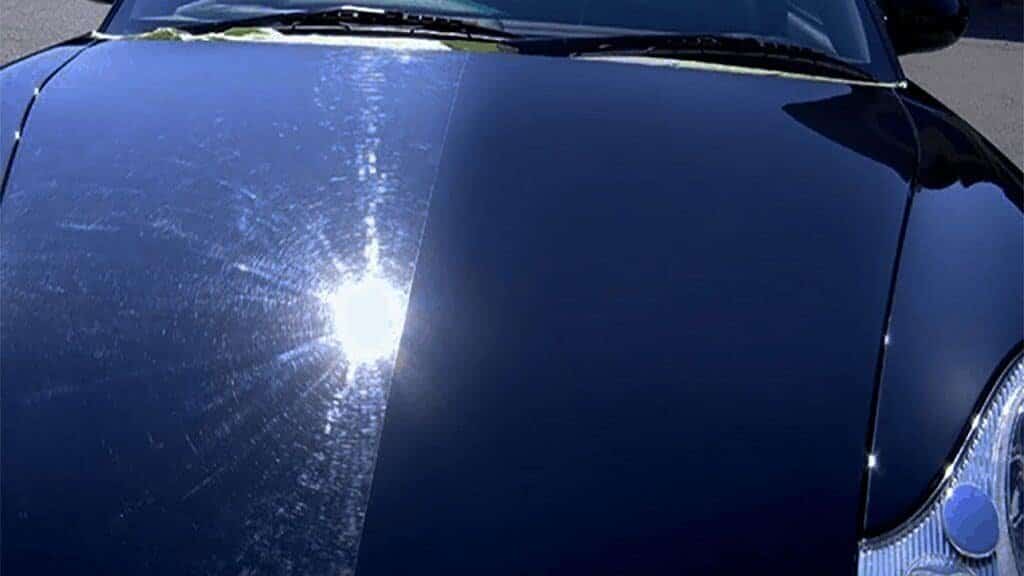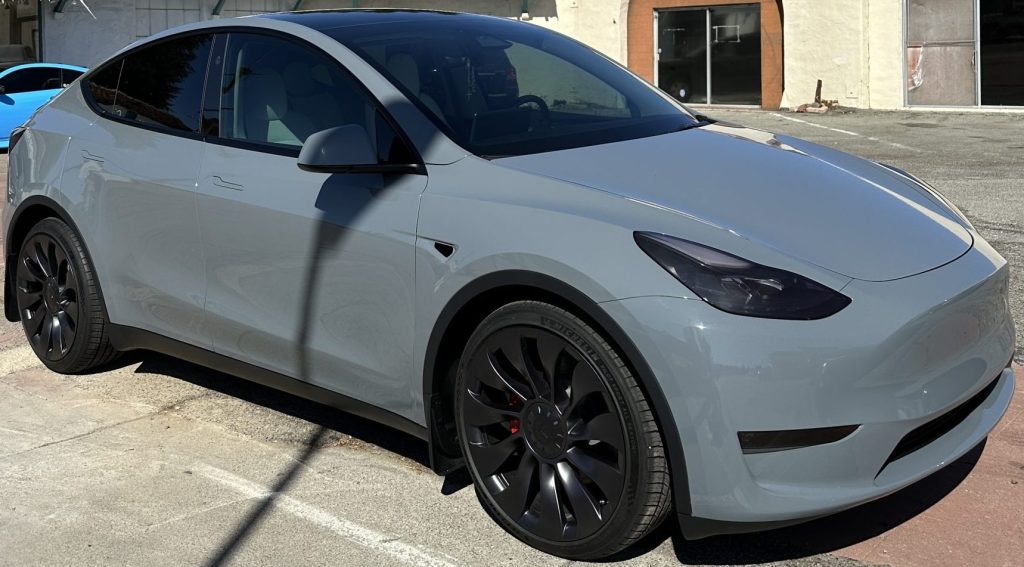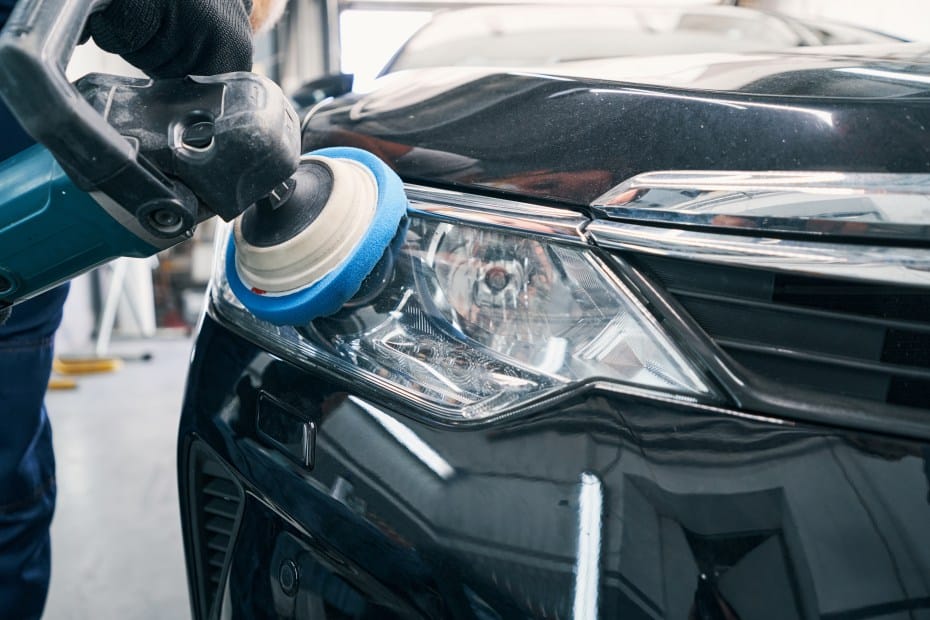I. Introduction
Paint Protection Film (PPF) is a clear and thin film that is applied to the surface of a vehicle to protect it from damage caused by rocks, debris, and other environmental elements. PPF is typically made of a high-quality, durable material that is designed to absorb impacts and prevent scratches, chips, and other damage to the original paint.
The importance of protecting your vehicle’s paint cannot be overstated. Not only does a damaged vehicle look unsightly, but it can also reduce the value of your car. By applying PPF, you can keep your vehicle looking like new for years to come.
Now that you have a basic understanding of what Paint Protection Film is, let’s delve deeper into the benefits and drawbacks of using it on your vehicle.
II. Is it worth getting paint protection film?
When it comes to protecting the appearance of your vehicle, the answer to this question is a resounding “YES!”. There are several benefits to using paint protection film, including:
Protection against scratches, chips, and other types of damage caused by road debris, rocks, and other environmental elements
Clear bra PPF preserves the value of your vehicle by preventing unsightly damage that can reduce the resale value
Easy to clean and maintain, so your vehicle always looks like new
PPF is virtually invisible, so it does not detract from the appearance of your vehicle.
With all of these benefits, it’s easy to see why many car owners choose to invest in paint protection film for their vehicles. Whether you’re looking to protect the appearance of your new car or to preserve the value of a used vehicle, PPF is a smart choice.
III. What are the disadvantages of paint protection film?
While there are many benefits to using paint protection film, there are also a few disadvantages to consider. These include:
Cost: Professional installation of PPF can be expensive, especially if you have a larger vehicle
Maintenance: PPF requires proper maintenance to ensure that it continues to look its best. This includes regular washing and waxing, as well as avoiding the use of harsh chemicals that can damage the film.
Despite these disadvantages, the benefits of paint protection film far outweigh the drawbacks for many car owners. If you’re looking for a way to protect your vehicle’s paint and keep it looking like new for years to come, PPF is a great option to consider.
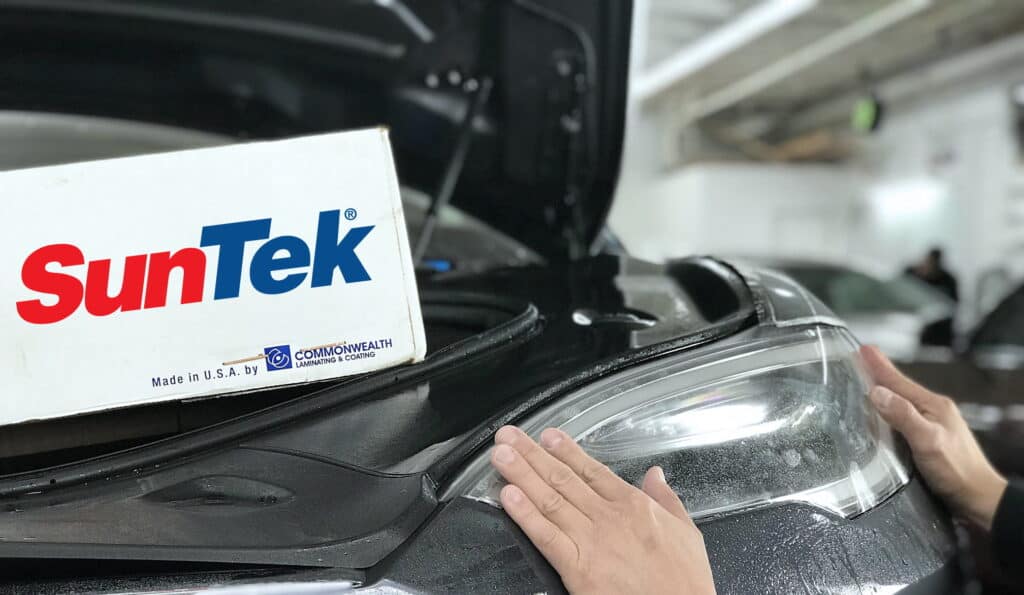
IV. How long does SunTek paint protection film last?
Suntek Paint Protection Film is known for its durability and long-lasting protection. When properly installed and maintained, SunTek PPF can last for several years. In many cases, the film will outlast the life of the vehicle.
One of the key factors that affects the longevity of SunTek PPF is the quality of the installation. Proper installation is crucial to ensuring that the film lasts as long as possible. When you choose a professional installer, you can be sure that your PPF will be applied correctly and will provide the maximum level of protection for your vehicle.
V. Does paint protection film peel off?
If the film is installed and maintained properly, it should not peel off. However, if the film is damaged or not properly maintained, it is possible for it to start peeling. Some common causes of peeling include:
Exposure to extreme heat
Exposure to harsh chemicals
Improper washing or waxing techniques
Physical damage to the film
To ensure that your paint protection film does not peel off, it’s important to follow the manufacturer’s guidelines for care and maintenance. This will help to keep the film in good condition and ensure that it continues to provide protection for your vehicle.
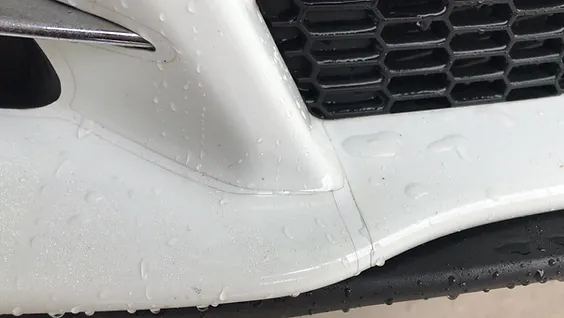
VI. Can I apply paint protection film myself?
While it is technically possible to apply paint protection film yourself, it is not recommended. Professional installation is recommended for several reasons, including:
Proper installation is crucial to ensuring that the film lasts as long as possible
Professional installers have the tools and equipment needed to apply the film correctly
Self-installation can be difficult and time-consuming, especially if you’re not familiar with the process
If you’re looking for the best possible protection for your vehicle, it’s best to choose a professional installer. You can find paint protection film near me by searching for “clear bra PPF” or “paint protection film near me” online. This will help you find a local installer who can help you get the protection you need for your vehicle.
VII. Do you wax over paint protection film?
Waxing over paint protection film is generally not recommended. Most manufacturers of paint protection film recommend using a specific cleaner or protectant to maintain the film, rather than wax.
Wax can build up on the film over time and cause it to yellow or cloud. This can negatively impact the appearance of your vehicle and reduce the level of protection provided by the film.
To maintain your paint protection film, it’s important to follow the manufacturer’s guidelines for care and maintenance. This will help to keep the film in good condition and ensure that it continues to provide protection for your vehicle.
VIII. Which one is better, PPF or Ceramic Coating?
Both paint protection film (PPF) and Ceramic Coating can provide protection for your vehicle, but each has its own unique advantages.
PPF is a clear, self-healing film that is applied directly to your vehicle’s paint. It provides a high level of protection against chips, scratches, and other types of damage.
Ceramic Coating, on the other hand, is a liquid that is applied to the surface of your vehicle. It creates a hard, protective layer that helps to protect against a variety of types of damage, including UV damage, water spots, and bird droppings.
Ultimately, the choice between PPF and Ceramic Coating will depend on your specific needs and the type of protection you’re looking for. If you’re looking for the ultimate protection for your vehicle, a combination of both PPF and ceramic coating can provide the best of both worlds.
IX. Is paint protection film worth it for a used car?
If you’re considering purchasing a used car, paint protection film can be a great way to protect your investment.
PPF provides a high level of protection against chips, scratches, and other types of damage that can negatively impact the appearance of your vehicle. By protecting your vehicle’s paint, you can help to maintain its value and keep it looking great for years to come.
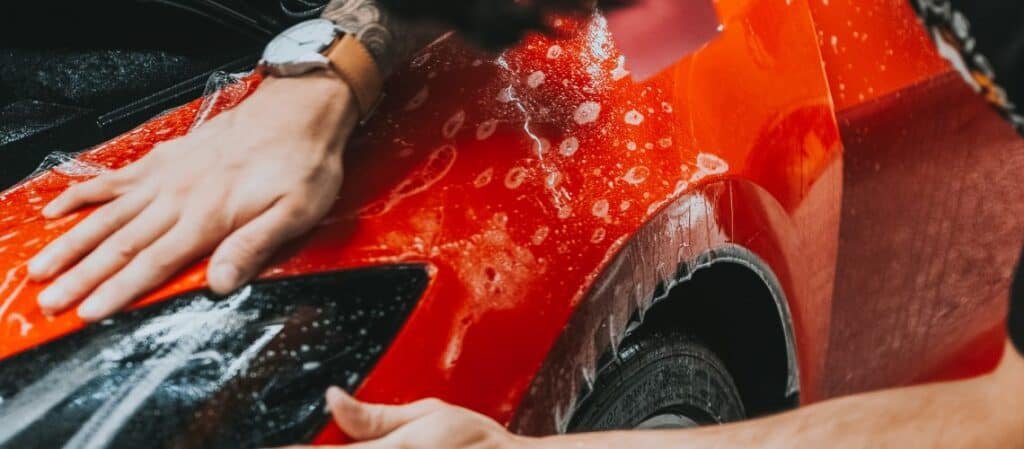
X. How much does a protective film on a car cost?
The cost of paint protection film can vary widely, depending on the size and type of vehicle, as well as the specific film you choose.
As a general rule, you can expect to spend anywhere from $500 to $5,000 for paint protection film, although some high-end vehicles can cost even more.
When considering the cost of paint protection film, it’s important to keep in mind that this is a one-time investment that can provide long-term benefits for your vehicle. By protecting your vehicle’s paint, you can help to maintain its value and keep it looking great for years to come.
XI. Can you drive in the rain after PPF?
Yes, you can drive in the rain after having paint protection film installed on your vehicle.
PPF is designed to be water-resistant and provide protection against water spots and other types of damage caused by exposure to moisture. This means that you can safely drive in the rain after having PPF installed, and you won’t have to worry about damaging your vehicle’s paint.
XII. How often should you wash your PPF?
To maintain the appearance and protect your paint protection film, it’s important to wash your vehicle regularly.
Most manufacturers recommend washing your vehicle once a week, or as needed, to remove dirt, grime, and other contaminants that can build up on the surface of the film.
When washing your vehicle, it’s important to use a gentle soap and avoid using brushes or abrasive sponges, which can damage the film. Following the manufacturer
Frequently Asked Questions
Is it worth getting Paint Protection Film (PPF)?
Yes! if you’re looking to protect your car’s appearance and value, paint protection film is definitely worth considering. With the wide availability of paint protection film near me and professional installation services, getting a clear bra PPF has never been easier.
What are the disadvantages of Paint Protection Film?
While paint protection film is a great solution for protecting your car’s paint, it does come with some disadvantages. One of the biggest drawbacks of PPF is the cost. Professional installation can be expensive, and the cost of the film itself can add up quickly.
Another potential drawback is the appearance of the film over time. As PPF ages, it may yellow and become less transparent, affecting the appearance of the vehicle. Additionally, if not properly maintained, the film may develop bubbles or become damaged, requiring replacement.
Lastly, it’s important to note that while paint protection film provides a good level of protection, it is not bulletproof. Severe impacts or damage from road debris can still penetrate the film and damage the paint underneath.
How long does SunTek Paint Protection Film last?
Suntek Paint Protection Film (PPF) is designed to last for several years, depending on the conditions and level of maintenance it receives. Generally, SunTek PPF is expected to last between 5 and 12 years, although with proper care, it can last even longer.
It’s important to note that the longevity of SunTek PPF will depend on a number of factors, including exposure to the sun, the environment, and the type of driving the vehicle is subjected to. Regular washing and maintenance, as well as avoiding aggressive driving, can help extend the life of the film.
Does Paint Protection Film Peel Off?
If the paint protection film is applied correctly, it should not peel off. However, if the film is exposed to extreme temperatures or improper maintenance, it can start to peel at the edges. Additionally, if the film is not applied correctly, it may not adhere properly, leading to peeling.
Can I Apply Paint Protection Film Myself?
While it is technically possible to apply paint protection film yourself, it is highly recommended that you have a professional do the job. The film must be cut and applied to fit your car’s specific curves and contours, which requires a high level of skill and attention to detail. A professional installation will ensure that the film is applied correctly, without any bubbles or wrinkles, and will last longer.
Do You Wax Over Paint Protection Film?
Yes, you can wax over paint protection film. However, it is important to use a high-quality, car-specific wax that is safe for use on the film. Additionally, you should avoid using waxes that contain abrasives, as these can scratch the film.
Which One Is Better: PPF or Ceramic Coating?
Both paint protection film and ceramic coatings have their own unique benefits and drawbacks. PPF provides a clear barrier between your car’s paint and the elements, protecting it from damage caused by rocks, sand, salt, and other road debris. Ceramic coatings, on the other hand, offer a long-lasting shine and protection, but they do not provide the same level of protection as PPF. Ultimately, the choice between PPF and ceramic coating comes down to your personal preferences and the level of protection you want for your car.
Is Paint Protection Film Worth It for a Used Car?
Yes, paint protection film is worth it for a used car. Not only will it protect the paint from damage caused by rocks, sand, salt, and other road debris, but it will also preserve the car’s original appearance and resale value.
How Much Does a Protective Film on a Car Cost?
The cost of a paint protection film for a car can vary greatly depending on the size of the vehicle, the type of film used, and the location of the installation. On average, a full car professional PPF installation can cost anywhere from $1,000 to $5,000.

